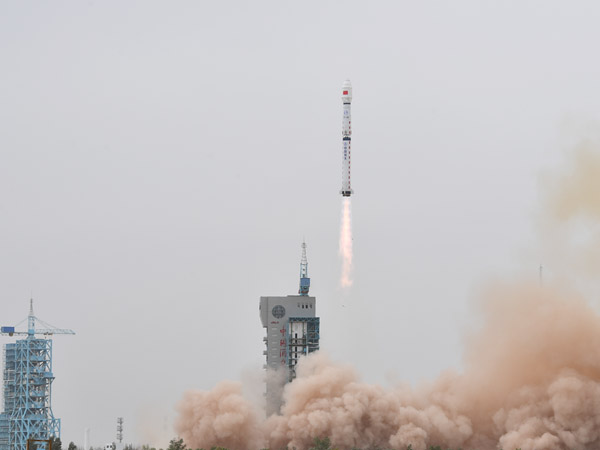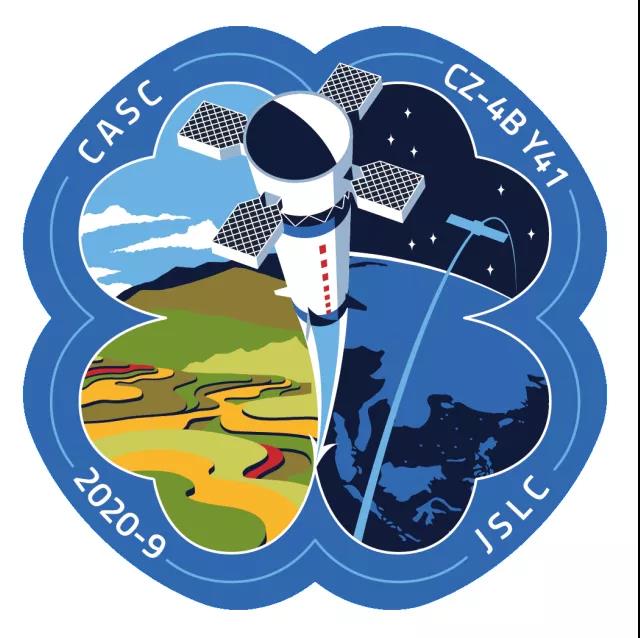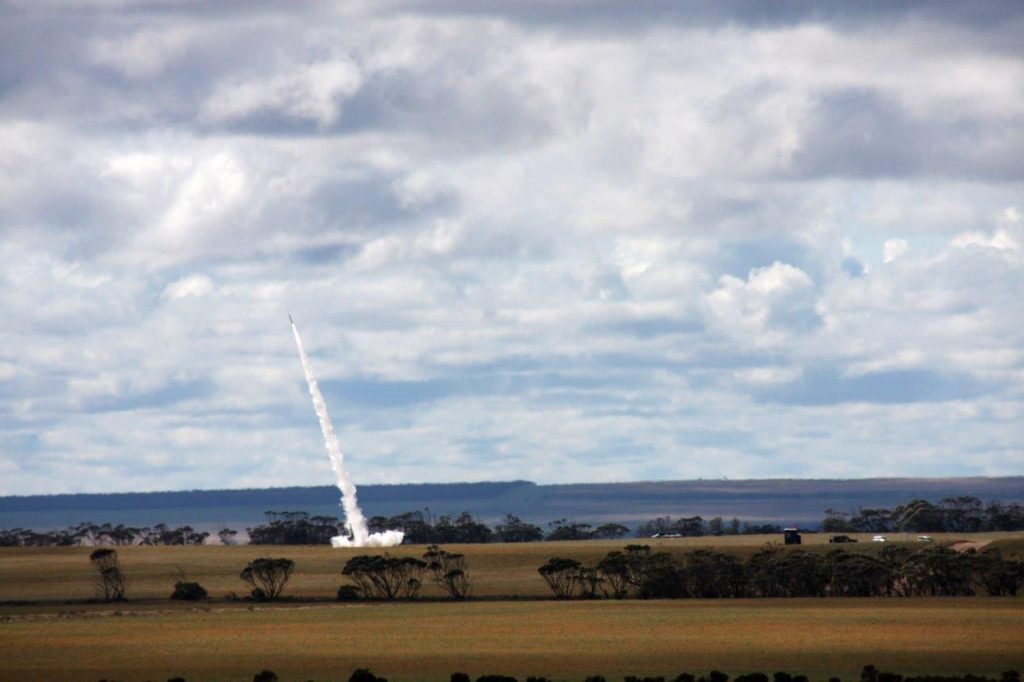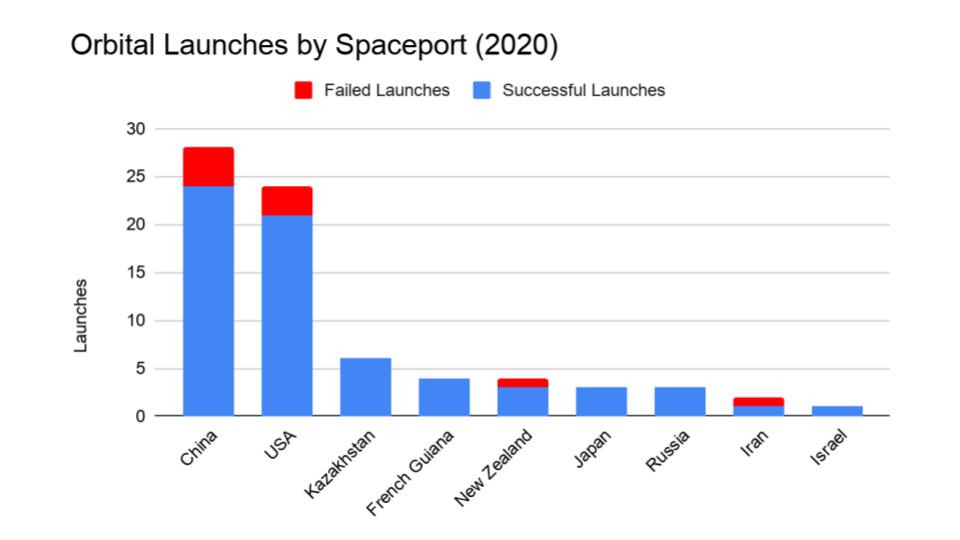Media
Transcript
For our only orbital launch of the week, on September 21 at 5:40 UTC, China launched a Long March 4B rocket carrying the Haiyang-2C to orbit from Jiuquan Satellite Launch Center in northern China.

This rocket had grid fins — including one that had been reused from a previous flight. The grid fins are used to help steer the first stage back down to the ground. According to China Aerospace News, the grid fins help shrink the landing zone of the first stage by at least grid85%.
The massive 1575 kilogram (that’s about the mass of 788 two-liter bottles of soda) satellite will join Haiyang-2B which was launched in 2018.
Onboard Haiyang-2C is a whole suite of instruments that will collect ocean height, temperature, and wind vector data, as well as help track ships using Automatic Identification System, and collect and retransmit buoy measurement information.
China Academy of Space Technology, the manufacturer of Haiyang satellites, stated that 2C will be networked with 2B once the new satellite has reached its final orbit. Together, the two satellites will be able to collect data more frequently — about once a day instead of once every three days.

Each satellite has an expected lifespan of about three years, although Haiyang-2A, which launched in 2011, operated well beyond that — its orbit was changed in 2016 to help investigate marine gravity inversion. The anticipated end of life for Haiyang-2A was this year and is currently not reported as operational by China’s National Satellite Ocean Application Service.
Five more satellites are expected in the series, with the next one launching as soon as next year.
In the foreground of this mission logo is the first stage of the Long March 4B with grid fins returning to Earth, dividing the image in two. An arrow points out from the bottom of the rocket, suggesting that the 4B is headed to a landing zone far, faaaar away from populated areas.

On the left appears to be a daytime depiction of rice paddies in the Chinese countryside.
The right side depicts a satellite crossing the night sky over China and nearby countries. There are eight stars and my best guess is that each star represents a satellite in the hi yang Haiyang-2 series.
And while we don’t normally talk about suborbital launches, we do have a special mention this week.
On September 19th at around 02:00 UTC, a privately-owned Australian company called Southern Launch successfully lifted a small payload on a suborbital mission. This was the first commercial launch of its kind from Australia. The mission, which was called DART, took off from a test range in an outback town in southern Australia (the Koonibba Test Range).
Southern Launch is a commercial company developing small, agile, reusable orbital and suborbital launch vehicles. They partnered with DEWC to launch the latter’s test payload DEWC-SP1, which sent back data to further the company’s satellite development process. The actual rocket was built by T-Minus Engineering.

To wrap things up, here’s a running tally of a few spaceflight statistics for the current year:
Toilets currently in space: 3
Toilets burned up: 2
Total satellites humans put into orbit: 832 (includes those launched from other in-orbit craft, such as the ISS)
Total satellites from launches: 804
Total Starlinks: 593
Total 2020 orbital launch attempts: 75 (including 9 failures)
I keep track of orbital launches by where they launched from, also known as spaceport. Here’s that breakdown:

China: 28
USA: 24
Kazakhstan:6
French Guiana: 4
New Zealand: 4
Japan: 3
Russia: 3
Iran: 2
Israel: 1
Your random space fact for the week comes to us from NASA: If you could lump together all the thousands of known asteroids in our solar system, their total mass wouldn’t even equal 10 percent of the mass of Earth’s Moon.
Learn More
Long March 4B launches new ocean observation satellite
- CASC launch announcement (Chinese)
- CAST launch announcement (Chinese)
- CNSA launch announcement (Chinese)
- NASA Spaceflight article
Australia’s first-ever launch of a commercial space-capable rocket
Credits
Host: Annie Wilson
Writers: Dave Ballard, Gordon Dewis, Ally Pelphrey, and Annie Wilson
Audio and Video Editing: Ally Pelphrey
Content Editing by Beth Johnson
Executive Producer: Pamela Gay
Intro and Outro music by Kevin MacLeod, https://incompetech.com/music/


 We record most shows live, on Twitch. Follow us today to get alerts when we go live.
We record most shows live, on Twitch. Follow us today to get alerts when we go live.